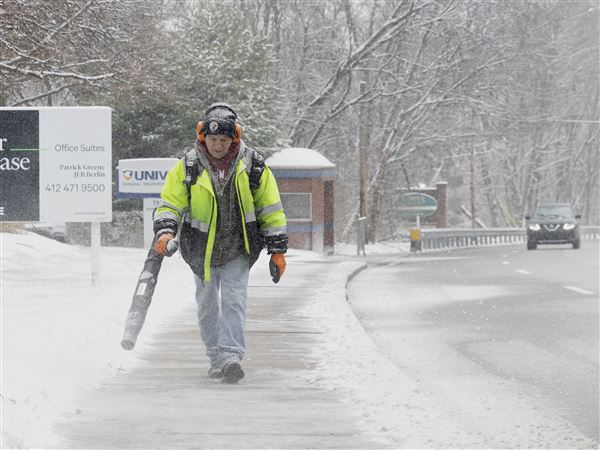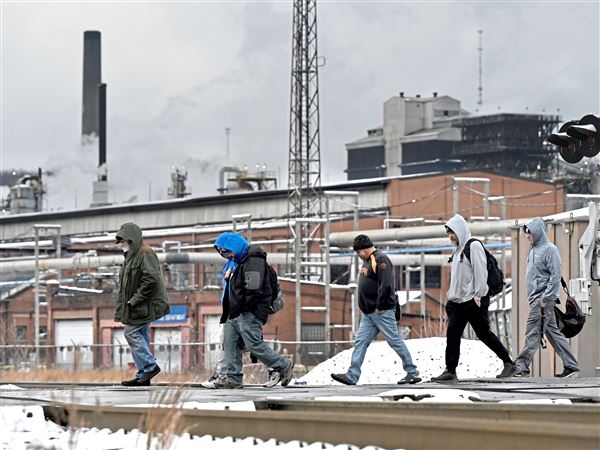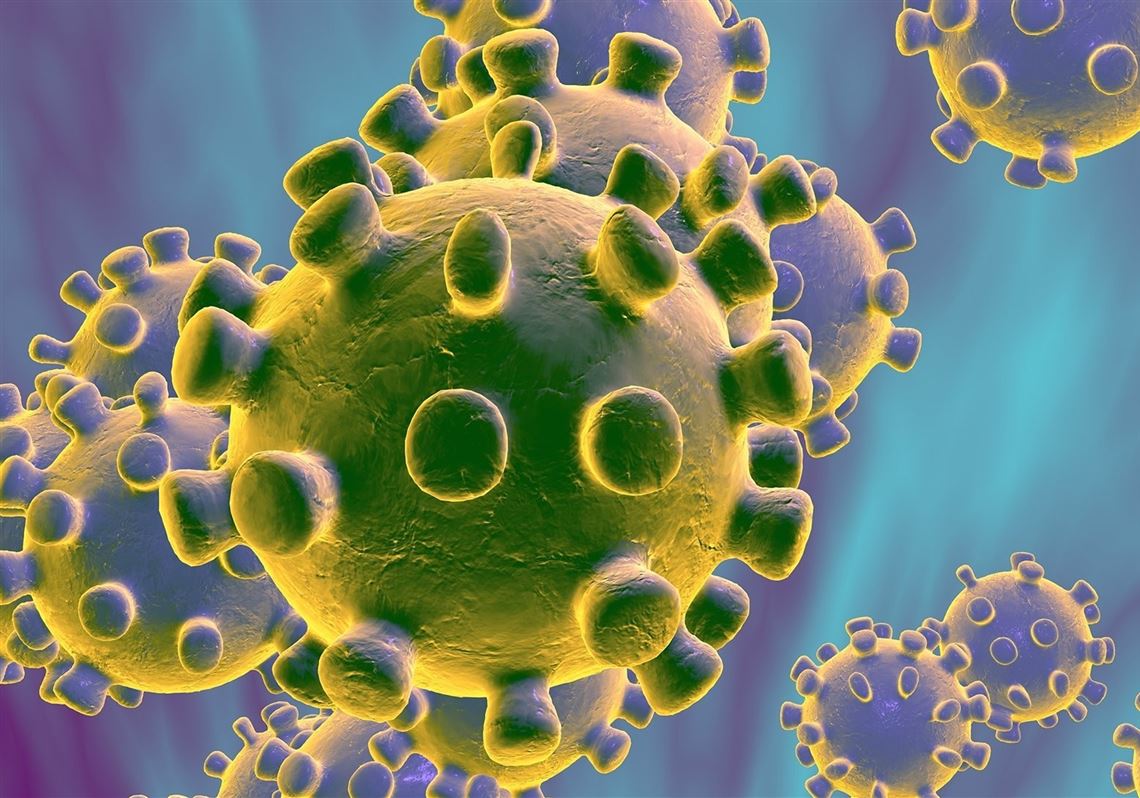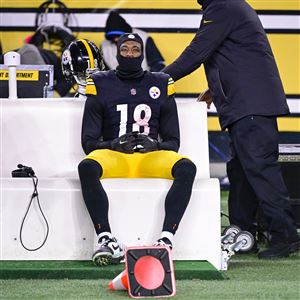It was on January 4, 2020, that the World Health Organization first Tweeted about a mysterious cluster of what were thought to be pneumonia-related cases in Wuhan, China.
The illnesses would soon be identified as being caused by a virus that was new to humans, later labeled as SARS-COV-2, the coronavirus that causes COVID-19, as the disease eventually was named.
As cases piled up, and research progressed at an unprecedented pace, changes to researchers’, doctors’ and the public’s understanding of the virus changed rapidly.
To try to understand what parts of our knowledge of COVID-19 have changed the most the Post-Gazette contacted a dozen local and national experts in infectious diseases, public health, health history and chemistry who have studied COVID-19 and asked them to describe what has changed the most in the last seven months. They came up with five issues: how COVID-19 is transmitted; the effectiveness of face masks; the use of ventilators; the best drug treatments for people infected with the virus; and whether COVID-19 would be seasonal.
But even that short list could quickly be usurped by new revelations that seem to come through research journals almost daily.
As Dr. Paul Offit, director of the Vaccine Education Center and an attending physician in the division of infectious diseases at Children’s Hospital of Philadelphia, said: “It’s only been out there for eight months. I’m sure there’s more surprises ahead.”
Transmission
Shortly after the first COVID-19 case was found in the United States on January 20, in a man from Washington state who had traveled to Wuhan, the recommendations on personal hygiene began in earnest: wash your hands regularly for 20 seconds, clean surfaces regularly, try not to touch your face when you’re out in a public area.
“Remember, back then we were talking more about how to wash down groceries, should we order takeout, down to minute details: Should I order a pizza? Should I take it out of the box? People were quarantining mail, quarantining packages,” recalled Mari Webel, an assistant professor of history at the University of Pittsburgh who teaches classes on the history of health.
Though there was a debate early on, the federal Centers for Disease Control and Prevention decided to declare in late May that surface transmission was merely “possible” but that “this isn’t thought to be the main way the virus spreads.”
But the debate then shifted to whether airborne transmission is more likely to be through heavier virus “droplets” that would fall quickly — hence the 6-foot social distancing requirement — or could potentially become “aerosolized and hang up in the air and travel more than six feet,” said Dr. Dan Lucey, senior scholar with the O’Neill Institute for National and Global Health Law and adjunct professor of medicine-infectious diseases at Georgetown University Medical Center.
The idea that the virus can travel more readily through either droplets or aerosolized virus also was aided by the understanding that transmission was spreading more easily indoors.
“We have very good evidence that most of the spread of the virus is from large numbers of people gathering indoors,” said Dr. Ashish Jha, director of the Harvard Global Health Institute said. “It doesn’t mean that you can’t spread the virus outdoors, but it’s just much, much harder. And it’s about ventilation, tight spaces, getting large numbers of people gathering indoors in tight spaces is the perfect medium.”
Facemasks
The rise in the understanding that wearing facemasks was an effective way to stop the spread of COVID-19 was a direct outgrowth of the debate over how the virus was most frequently being transmitted, experts said.
“That’s part of what we learned about the transmission of this virus,” said Dr. Thomas Walsh, medical director of Allegheny Health Network’s antimicrobial stewardship program. “Relatively early on ... there were hints that people could be infected and not have symptoms but still spreading the virus.”
But studies find that asymptomatic COVID-19 positive people do appear to spread the virus readily, a finding that rapidly changed the way researchers viewed wearing facemasks.
That has caused confusion for some, particularly because Dr. Anthony Fauci and other public health leaders at one point advised against the public wearing facemasks, even though they’ve since explained that was largely because of a fear that facemasks for frontline healthcare workers would end up in short supply if 350 million people rushed out to buy them.
But when the data on asymptomatic spread of the virus became clear, Dr. Fauci and others changed their messaging and encouraged mask usage.
Ventilators
Early on in the pandemic, the importance of ventilators to people with severe cases of COVID-19 was driven home by pleas from states with hot spots for more ventilators, and states — including Pennsylvania — that made ventilator usage a key daily metric they tracked publicly as a way of showing how prepared hospitals in any given area were.
But that idea of the widespread use of ventilators was driven by examples in hot spots around the world where hospitals were overwhelmed, particularly, first, in China and Italy, and then in Seattle and New York, said Dr. Greg Martin, director of the Predictive Health Institute at Emory University and Georgia Tech, and professor of medicine at Emory University School of Medicine.
In each of those locations, the fatality rate for those who were placed on ventilators was high, more than 50% in some cases.
But Dr. Martin and his colleagues noticed early in their experiences with COVID-19 patients on ventilators in Georgia, they were not putting nearly as many patients on ventilators, and those patients they were were surviving at a higher rate than prior studies.
“One thing that was different here compared to China, northern Italy or New York is that were were not under severe stress like they were; we weren’t stretched and we weren’t at the point where we couldn’t take normal care of patients,” he said.
But another part of the reason why they did not put patients as quickly on ventilators, he said, was: “We were a little bit fortunate that we had a lot of feedback from Seattle, China, New York and Italy.”
Dr. Amesh Adlalja, a Pittsburgh-based infectious disease physician and senior scholar at the Johns Hopkins Center for Health Security, said as a result: “Now you don’t want to reflexively put patients on a ventilator.”
“Where we’ve learned the most is the physicality of the virus and how to treat it,” Dr. Adalja said. “That’s the reason why fatality rates are falling, because we understand better how to treat it.”
Drug treatments
Some early drugs that offered some hope that they would work have since been found not to help, including hydroxychloroquine, which the U.S. Food and Drug Administration in June removed from its Emergency Use Authorization list.
But there is now a short list of promising drugs that appear to be helping patients, with remdesivir, a broad-spectrum antiviral medication originally developed to treat hepatitis C, at the top of that list after it showed some promise against other coronavirus, including SARS and MERS.
A randomized, controlled study backed by the National Institutes of Health found that remdesivir shortened the time to recovery for some patients. The study’s findings were encouraging enough that demand for the antiviral drug has outstripped supply, which is now tightly controlled by the federal government.
Another on the short list is dexamethasone, a steroid that in a controlled study showed an impact on mortality in a sub-group of patients.
Two others that are showing promise and are still being studied are monoclonal antibodies and blood plasma from previously COVID-19 positive patients.
“What they’re both going to do is prevent virus replication,” Dr. Offit said.“I think they have promise.”
Seasonality
All of these new understandings about how to prevent and fight the virus are important now, the experts agreed, because it seems clear that COVID-19 is not going to be seasonal.
“I think we’ve learned the warm weather is not protective from the spread of this virus like we’ve seen with other viruses” that decline in warm weather, Dr. Debra Bogen, director of the Allegheny County Health Department said at her weekly online press conference this past week.
The implications of that are even broader, though, Dr. Adalja said.
“The biggest thing we’ve learned is this is a virus that is going to establish itself in the human population because we don’t have widespread immunity to it,” he said.“Many people thought there was going to be some seasonality to it like there was with other coronaviruses. But because of the amount of spread, we’ve come to understand that that’s not the case.”
Dr. Lucey of Georgetown, who has made a point in his career to get on the ground where pandemics were occurring around the globe, was in China and Toronto dealing with SARS cases in 2003, said he was always bothered by that misconception about SARS.
Because of that work, he said: “I knew it stopped not because the weather got warm, but because of an incredibly well coordinated effort from all the countries around the world where there were patients with SARS.”
Moreover, he said, he tried to tell people early on in the COVID-19 outbreak that it was obvious it was not seasonal “because it was already in the southern hemisphere” where it was already warm.
“I think we’ve made a number of false analogies to the influenza virus” that is seasonal, he said.
But Dr. George Rutherford, a professor of epidemiology and biostatistics and director of the Prevention and Public Health Group at the University of California at San Francisco, said even that seasonality idea might have been misunderstood.
“The logic of it was that it would behave like influenza and get worse in the winter and spring,” he said. “But how much of that is climatic [with influenza] and how much of that is kids getting out of school and don’t transmit it anymore? We don’t know.”
Sean D. Hamill: shamill@post-gazette.com or 412-263-2579 or Twitter: @SeanDHamill
First Published: August 15, 2020, 10:00 a.m.
Updated: August 15, 2020, 10:35 p.m.
















